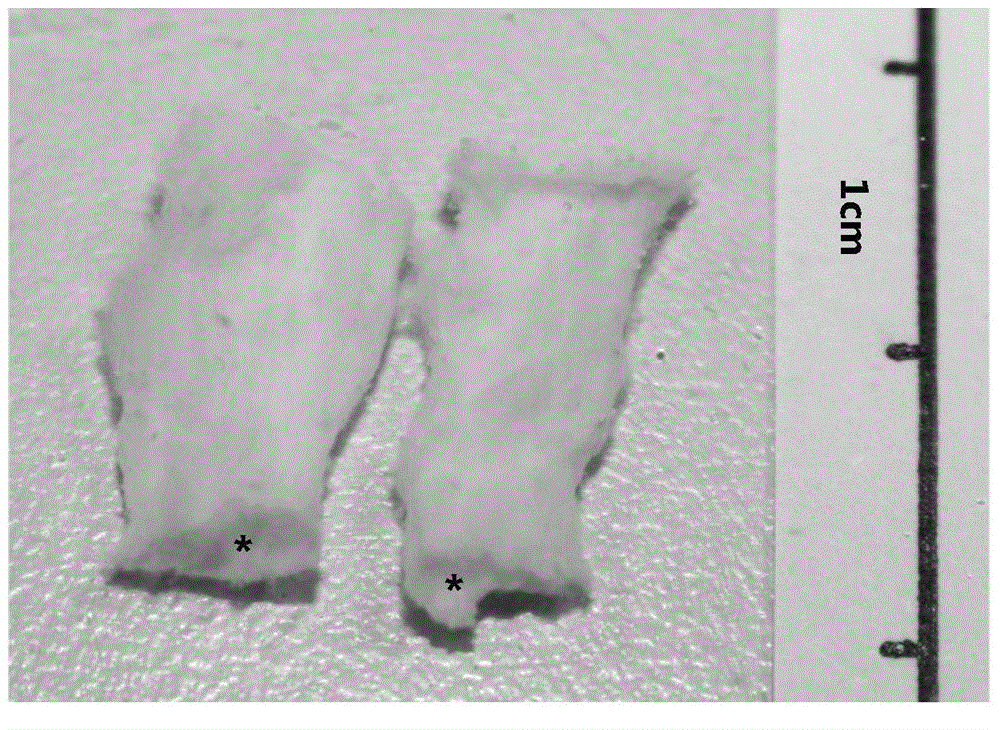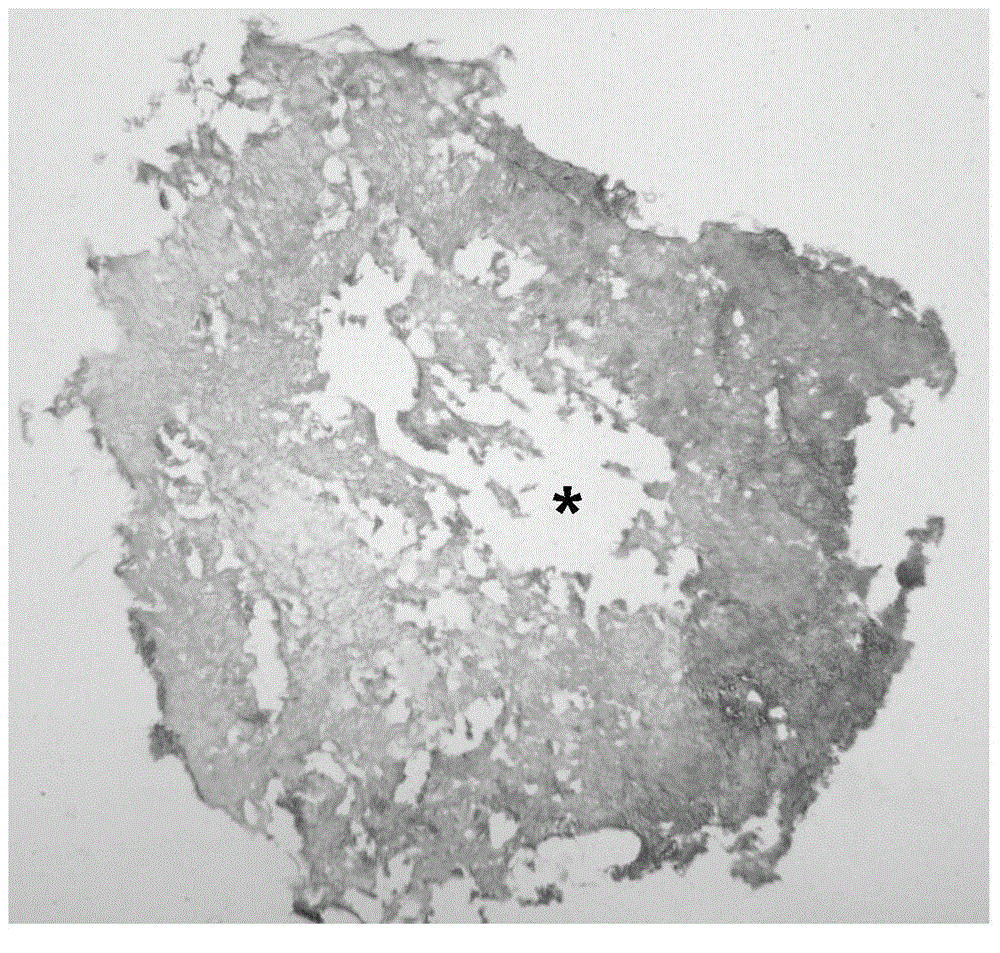Decellularized epineurium catheter and preparation thereof as well as application to repairing of peripheral nerve injury
A technology for peripheral nerve injury and decellularization, which is applied in the field of biomaterials and nerve injury repair, can solve the problems of epineurial catheter function without literature report and the preparation of epineurial catheter without decellularization reported in literature, etc., so as to reduce peripheral nerve Adhesion, reduced incidence of neuroma, low immunogenic effect
- Summary
- Abstract
- Description
- Claims
- Application Information
AI Technical Summary
Problems solved by technology
Method used
Image
Examples
Embodiment 1
[0033] Example 1: Preparation of decellularized epineurium catheters
[0034] Place several pieces of epineurium catheters in distilled water for shaking and rinsing for 6 hours.
[0035] Put the nerve into 10ml / L Triton X-100 (polyethylene glycol octylphenyl ether, purchased from Sigma company) aqueous solution and let it stand for 12h. After rinsing in distilled water for 3 times, put it into 40g / L deoxygenated Sodium cholate aqueous solution (purchased from Sigma) was shaken at room temperature for 24 h, and finally rinsed in distilled water for 3 times. 60 Co irradiation (20kGy) was sterilized for 12h, and stored at 4°C for later use.
Embodiment 2
[0036] Example 2. Study on Biological Properties of Decellularized Epineurium Conduits
[0037] (1) Observation of ultrastructure
[0038] The ultrastructure of the cross-section, longitudinal section and outer surface of the decellularized epineurium catheter was observed under scanning electron microscope and transmission electron microscope. The results showed that the collagen components in the decellularized epineurium ducts were well preserved and the cells were completely removed.
[0039] (2) Determination of porosity
[0040] The decellularized epineurium catheter was placed in a freeze dryer for 24 hours, and the porosity of the material was measured by the liquid substitution method. The details are as follows: Take 10 pieces of material, randomly select 5 points for cross-sectional diameter measurement and calculate the average value. The electronic balance weighs its mass (accurate to 4 decimal places), and weighs 5 times to find the average value. Immerse a s...
Embodiment 3
[0047] Example 3. Study on Immunogenicity of Decellularized Epineurium Catheters
[0048] The porcine decellularized epineurium catheter and the fresh epineurium catheter were respectively implanted into the paravertebral muscles of SD rats, and the samples were collected for histological observation at 1 to 4 weeks after the operation, and the degree of inflammatory response was evaluated by H.E. staining; immunohistochemistry was applied Methods The degree of infiltration of CD3, CD4 and CD8 positive T cells in the graft and surrounding tissues was observed, and the intensity of immune rejection was evaluated. The results showed that the inflammatory response and immune rejection in the decellularized epineurium catheter group were weaker than those in the fresh epineurium catheter group.
PUM
 Login to View More
Login to View More Abstract
Description
Claims
Application Information
 Login to View More
Login to View More - R&D
- Intellectual Property
- Life Sciences
- Materials
- Tech Scout
- Unparalleled Data Quality
- Higher Quality Content
- 60% Fewer Hallucinations
Browse by: Latest US Patents, China's latest patents, Technical Efficacy Thesaurus, Application Domain, Technology Topic, Popular Technical Reports.
© 2025 PatSnap. All rights reserved.Legal|Privacy policy|Modern Slavery Act Transparency Statement|Sitemap|About US| Contact US: help@patsnap.com


